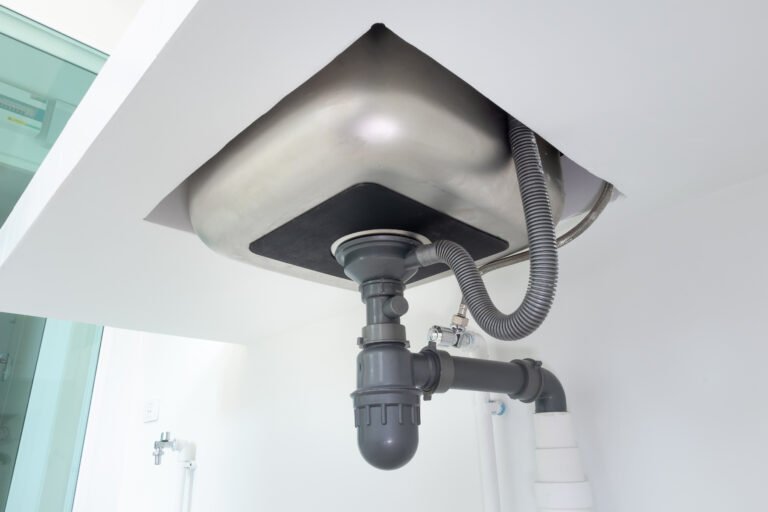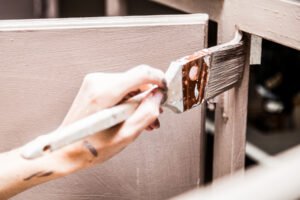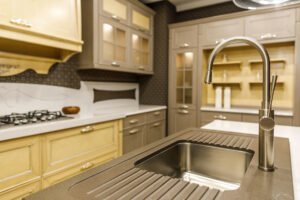Sinks are among the most viable accessories for a kitchen. From washing utensils and stuff to holding dirty mugs and plates, a kitchen sink does it all. Unfortunately, these activities disrupt the free flow of water and might lead to a stinking kitchen sink. So, how do you tackle this issue?
One way is to use a simple plumbing vent pipe that runs down from the roof and ensures the free flow of water to the drain. But do all kitchen sinks need a vent? If yes, how do you fix them the right way without any leakage? This guide explains everything!
Every kitchen sink needs a plumbing vent to eliminate the negative pressure formed in the waste pipe. Moreover, the vent also ensures a fresh supply of air to the drain trap and provides a smooth water flow, thus preventing sewer gases from entering your home.
What Is A Plumbing Vent?
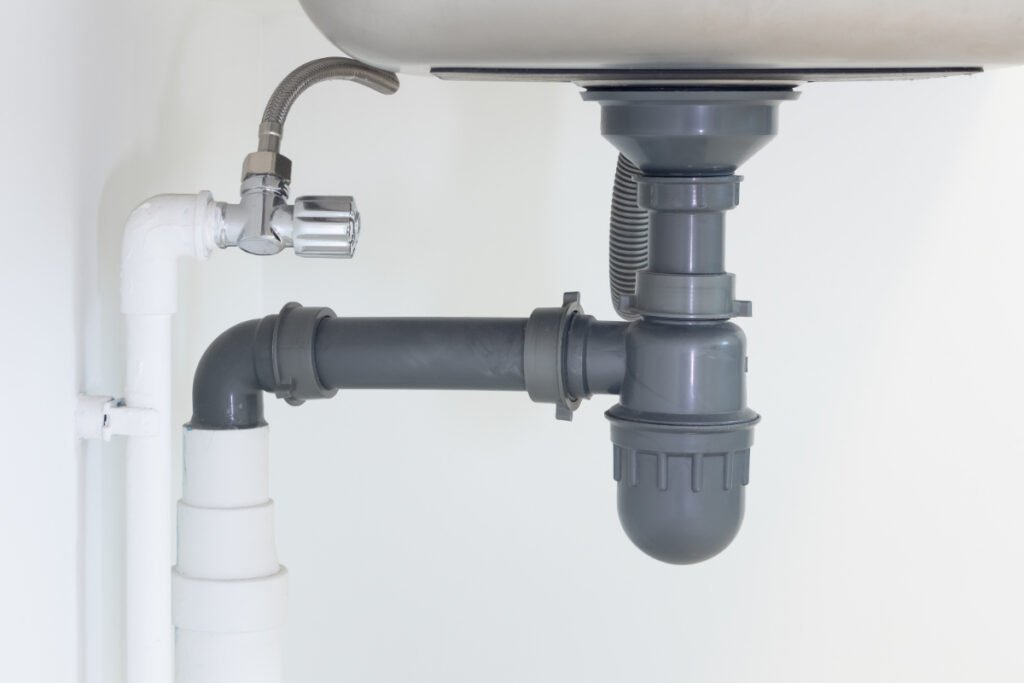
The sink vent or the stack vent is an additional plumbing fixture, allowing a fresh passage of air from the main roof to the sink’s drain line. Venting helps maintain equilibrium and the proper air pressure in your plumbing system and reduces all foul exhaust and sewer gas from plumbing.
How Does Standard Venting Work?
The drain pipe for most of the home sinks goes directly into the back wall and splits into two. One end of the pipe goes down to the vertical drain line, while one goes upward towards an open roof vent. As a result, the pipe gets a continuous flow of fresh air from the roof and forces out fluids and sewer gas from the downward pipe.
Benefits Of Kitchen Sink Vents:
- Regulates Airflow: The main vent pipe forces fresh air into your plumbing system, thus removing any stuck waste and ensuring a uniform flow of wastewater and sewage through your floor drain.
- Prevents A Vacuum In The Drain Pipe: A vent system prevents fluid and gas stagnation, which causes slow drainage from your fixture drain.
- Removes Foul Sewer Gas: A wet vent disposes of all the odorous gases in your plumbing system and prevents them from entering your home again.
- Maintains Air Pressure: Venting maintains constant circulation throughout the pipe, thus nullifying the extra pressure on pipe walls and helping them last longer.
What Happens If A Kitchen Sink Is Not Vented?
- Bubbles While Draining Water: Water won’t discharge smoothly from your sink drain, causing bubbles in your pipes and other plumbing fixtures.
- Odor From The Drain: Sewer gas will not escape from the plumbing system without vent pipes. Therefore, foul odors may emerge from your sinks, bathrooms, toilets, or anything connected to the wastewater pipe.
- Gurgling Sounds: Vents maintain the air pressure within your pipes. Thus, if you don’t vent your system, the restricted airflow will hamper the smooth flow of water and cause a gurgling sound as it goes down.
- Health Issues: Without a plumbing vent, waste gases like carbon dioxide, hydrogen sulfide, and ammonia may re-enter your kitchen and cause headaches, nausea, and dizziness on inhalation.
- Fire: Exhaust gases like methane and hydrogen sulfide are highly flammable and may explode if not let out properly without a plumbing vent.
How Do You Vent A Sink Efficiently?
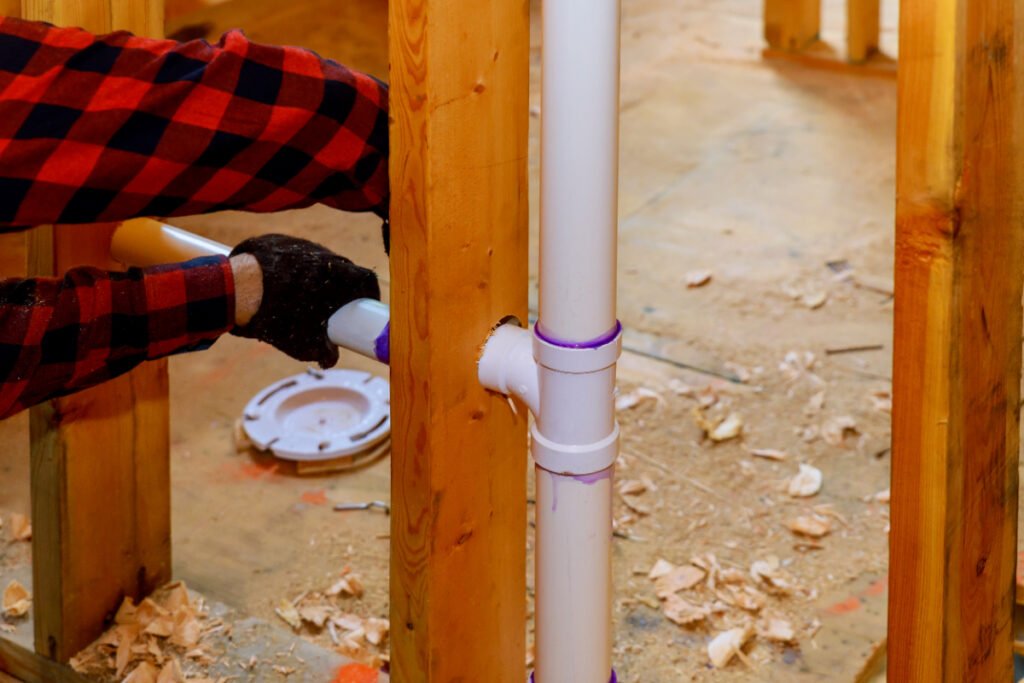
- Pick The Correct Spot: Place the vent where the kitchen sink’s p-trap goes down and meets the waste line. Generally, the distance between the vent and the trap (in feet) should be twice as large as the waste pipe diameter (in inches).
- Install The Sanitary Tee: Glue the sanitary tee to the waste pipe and attach the vent pipe to it. Here, you might need to core-cut (a hole in the wall) to vent the pipe through the wall.
- Route The Pipe: Once you attach the pipe to the waste line, ensure that it does not slope down at any point. Always keep it slightly raised and tilted towards the top. If necessary, use additional clamps and brackets to support it better.
Popular Types Of Vent Piping:
- True Vent or Dry Vent: A dry vent is a vertical cast iron, galvanized copper, or PVC pipe that runs from the roof to the drainpipe and brings fresh air to each plumbing fixture.
- Auxiliary Vent: Auxiliary vents are like branch vents used to attach multiple kitchen sinks or dishwashers to the main vent pipe.
- Common Vent: A common plumbing vent unites the auxiliary vents of two kitchen sinks located on opposite faces of the same wall. They are popular in row houses, apartments, and flats with back-to-back kitchen sinks.
- Wet Venting: A wet vent is generally a waste-carrying pipe that doubles as a vent when the kitchen sinks are too close to the wall or if a group of 2 or more fixtures shares the same venting pipe. In this case, the same pipe carries both liquids and gases. Thus, it needs maintenance frequently.
- Loop Vent: The international plumbing code recommends using a separate venting pipe or loop vent for standalone sinks where re-venting can be problematic and costly. In such a case, each free-standing fixture gets its own vent pipe that runs straight from the roof.
Best Materials For a Venting Plumbing Pipe:
1. Cast Iron: Cast iron pipes are robust, long-lasting, and durable. They are black and heavy metal, with a soft textured surface that does not rust easily. However, cast iron pipes have a larger diameter, and hence, they are not a good option for sinks that are too close to the walls.
Moreover, since joining and maintaining them requires special tools and equipment, they are tricky to work with and may cause more installation charges.
2. PVC ( Polyvinyl Chloride): PVC is a white plastic pipe that’s not only easy to cut and attach but has high heat resistance, making it a suitable choice for exterior vent pipes. Moreover, its installation is pretty easy, and all you need is a suitable chemical solvent, plastic clips, and fittings that anchor the pipe to the wall.
3. Chromed Brass: You can use chromed brass vent pipes in places where you have exposed vents and sanitary fixtures. These pipes are shiny, polished, and give a grand appearance but are expensive. Moreover, since they have a comparatively larger diameter, they ensure a smooth water flow and fewer blocking chances.
Problems With a Plumbing Vent Pipe:
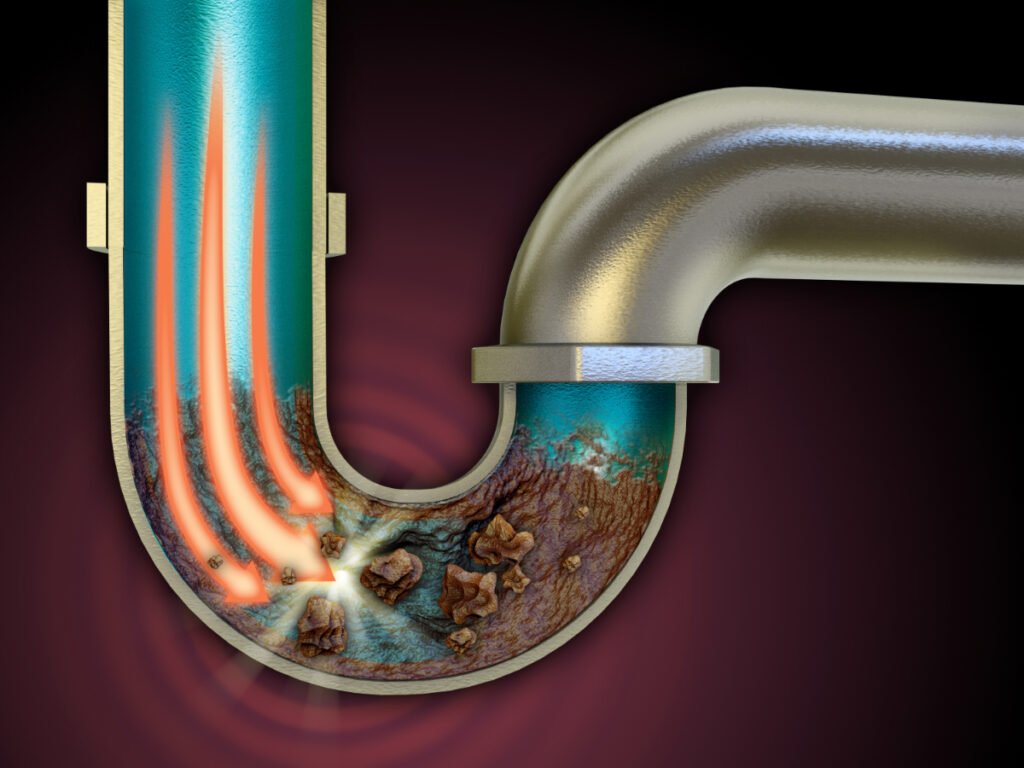
Plumbing fixtures are subjected to continuous wear and tear due to contact with water, gas, or harmful chemicals, and vent pipes are no exception. Like other pipes, they are subjected to clogging, corrosion, and other leakage problems and need annual maintenance.
- Clogging: Solid waste and other impurities may clog a vent pipe, especially near the trap weir, and cause gases and foul smells to re-enter your room. Clogging may also lead to a sluggish drain, and thus, you need to push it down the pipe with a plunger.
- Corrosion: Vent pipes are prone to internal corrosion from the hot air, moisture, and steam that passes through them. Thus, if they are not maintained, they might wear out faster and cause leaks.
- Leaking: Leaks in the main pipe or stack vent may allow rainwater to enter your vent line, thus degrading the rest of the branch vents and causing more pressure on the pipe walls. Eventually, this water will seep in through your walls, ACs, and roofs, causing leakage problems for the entire house.
- Incorrect Installation: If the vents are too long or short in size or installed just next to a door or window, they won’t get a proper air supply and might leak sewer gases to your rooms.
How Do You Fix A Plumbing Vent Pipe?
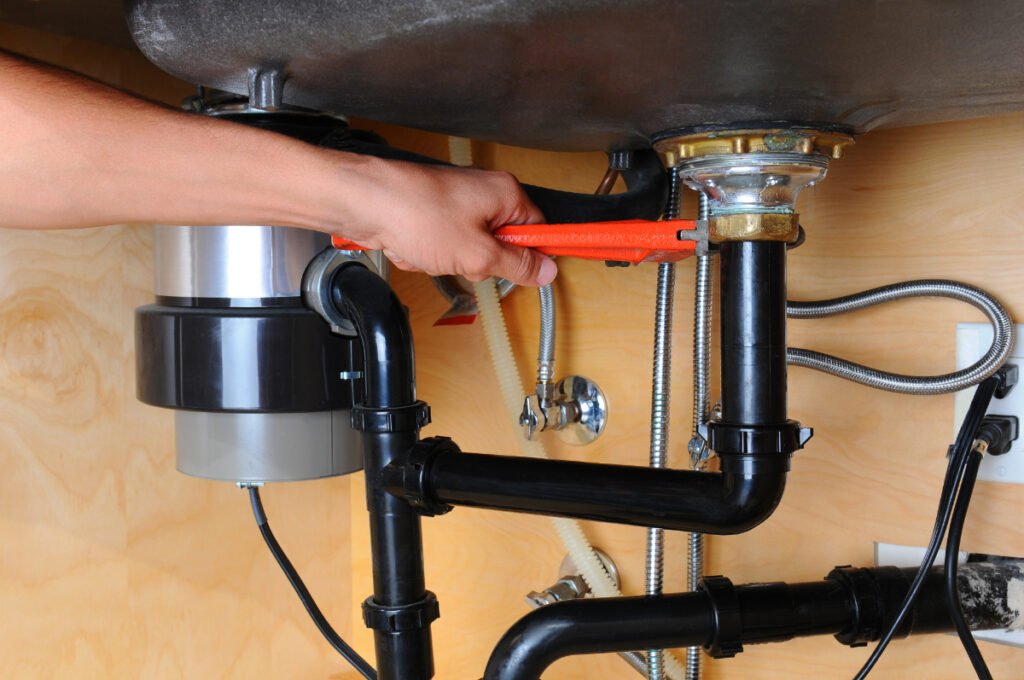
- Reline A Venting Pipe: Relining is the process of cleaning and drying the interiors of a pipe using a solution of an epoxy solvent and water. When cured, this solution creates a dry film on the internal surface of the pipe, thus preventing corrosion and clogging.
- Pressure-Test A Plumbing Vent: Ask a professional plumber to conduct a pressure test for the vents and check for possible leaks. The plumber will seal the pipe at various places and pass air and gas to check for the leak locations.
- Use An Electric Drain Auger: Insert an electric drain auger to clear off all the blockage and solid waste from your pipe. An electric auger comes with its own set of cutters and handles that force waste down the drain pipe and restores the smooth water flow.
Tips For Venting Plumbing Pipes:
- A vent pipe doesn’t need to slope down like a wastewater pipe and should always run perpendicular to the drain line.
- The horizontal portion of a vent pipe should be at least six inches above the fixture’s flood line, which is the maximum level to which the water can rise.
- If you have old pipes, probably made of clay or any other porous material, call a professional plumber to auger them to the main line.
Alternatives to Dry Venting:
- Unique Wall Vents: Wall vents are a particular type of perimeter vents that directly run along walls and have an outlet on the face of the outer wall. Such types of vents are helpful for basement sinks and underground fixtures.
- Cheater Vents: Cheater vents are modified vents that take air from inside the room rather than the rooftop. Such devices are helpful for the sinks present in cramped kitchens or dry balconies.
- Air Admittance Valve: An air admittance valve is a device that opens up to balance the negative pressure in the pipe and draws more air into the plumbing system, much like a studor vent or studor AAV. It is a convenient device for areas where a roof vent is impossible, like rooms with full-height clerestory windows or glass walls. Moreover, just a dry vent pipe, an air admittance valve, ensures the smooth draining of water and prevents bubbles or release of exhaust gases in your home.
How Do You Check For A Clogged Plumbing Vent?
Checking for a blocked vent is relatively easy, and you can detect any significant blockages just by inspecting the pipe with a strong torch. Alternatively, you can even run a plumber’s snake down the vent pipe and clear off any obstructions by pushing it down.
How Far Should The Vent Be From The Kitchen Sink?
Generally, the distance (in feet) between the sink’s trap and the vent is twice more than the vent pipe diameter (in inches). That means, if your vent pipe is 1.25” in diameter, you should place it at a distance of not more than 1.5 feet from your sink trap.
How To Vent A Kitchen Sink That’s Under A Window?
Venting a typical kitchen sink is relatively easy. You will just need to connect the auxiliary vent to the main vent pipe, and you are done. But, if you have a window just above your sink, you’ll need to run the vent with a slight upward slope till the window gets out of the way, and then connect it to the main vent using a metal tee or pipe junction.
How Do You Vent A Double Sink?
You can use typical y or t traps that connect both the tubs of your double sink and attach them to the main vent using a common vent connector. Alternatively, you can use two p traps and connect them to the secondary auxiliary vent to let out gases.
How Do You Vent A Vanity Sink?
The best way to vent a vanity sink is to use a standard p, or u-shaped trap under the sink and connect it to the main vent using a standard PVC dry vent pipe.
Does A Plumbing Vent Always Have To Go Through The Roof?
While roof stacks are the most common inlets for fresh air into the vent pipe, you can also run them through your external walls and other ducts. However, always ensure that the plumbing vent goes out from the highest point of your house to ensure fresher and cooler air for good ventilation.
Vent stacks are essential for all drainage fixtures, especially the kitchen sinks. They ensure a smooth flow of water and prevent harmful, disease-causing gases from entering your home and causing a foul smell. So, instead of drain cleaning the pipe now and then, install a vent!
But plumbing fixtures like vents are susceptible to corrosion, and even after proper installation, they need maintenance or repainting! But can all plumbing fixtures, such as kitchen sinks, be painted? Find out in our guide on “can kitchen sinks be painted?”

